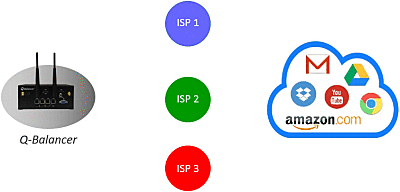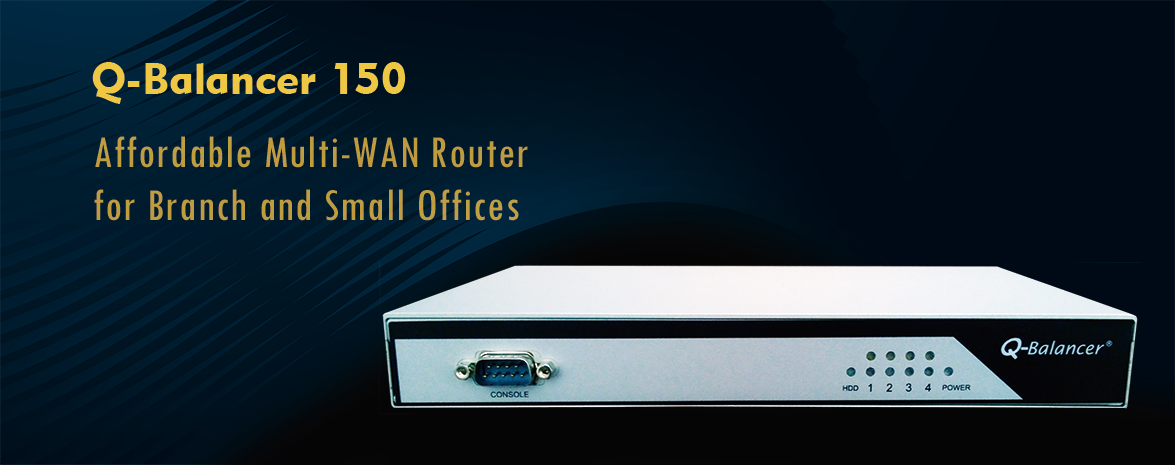Simplifying The Implementation and Configuration of Routing Policies
Domain names can be added to a policy‐based routing as destinations. In a multi-WAN network, network administrators might have the need to set FQDN as a destination in a routing policy in order to route traffic destined for organizations like Google or Youtube via specific path(s). This will make policy configuration much easier as there will be no need to find out all the IP addresses for the domains like Google and Youtube, and to add IP routing rules for those IP addresses.
When an outbound web request comes up, it finds out the destination IP through a DNS lookup; the request is then sent out to the internet. The network gateway (or firewall) adds an IP routing rules based on the destination IP address. Next outbound web requests destined for the same domain name destination will be sent out via the same path based on the IP routing rule previously created in case the query ideally receives same IP address from DNS lookup, or the destined domain name has only one single IP address for DNS queries. However, the organizations such as Youtube or Google usually have hundreds of IP addresses for their domain names, and their DNS servers randomly and frequently respond DNS queries with different IP addresses. Thus, the outbound requests arises later will hardly match the IP routing rules previously created.
> Policy Based Domain Routing
Policy #1: Source IP + Custom Domains + ISP 1
Policy #2: Source IP + Inbuilt Category of Military + ISP 2
Policy #3: Source IP + (Inbuilt Categories of Government & Education) + ISP 3

Policy-Based Domain Routing
Those issues can perhaps be solved by statically adding all IP addresses of a domain name to IP routing rules. Adding those hundreds of IP addresses to IP routing rules can be time-consuming, error-prone and doesn't guarantee the applications get routed correctly because organizations might still have the need to add or delete their IP addresses based on business intent. On top of that, network administrators will probably have the need to endlessly deal with more and more similar situations like this.
As a solution to the issue, whenever a outbound request arises, Q-Balancer has the ability to dynamically learn the IP resolved via DNS lookup and add an IP routing rule for the destination IP in real-time. This enables business to simplify the works of policy configurations by setting policy routing rules based on domain names rather than lots of IP addresses. This is especially useful for the destined domain names with so many IP addresses. As policy based routing rules can be applied with domain names, link load balancing, link failover, and QoS can also work together in a single routing policy rule. In conjunction with application based routing, this feature efficiently and flexibly ensure the connectivity for critical applications in a hybrid WAN network.
Top Benefits
> Simplified routing policy
> Improved application performance
> Greater business productivity
> Better network utilization
> Granular path control over hybrid-WAN network
























































